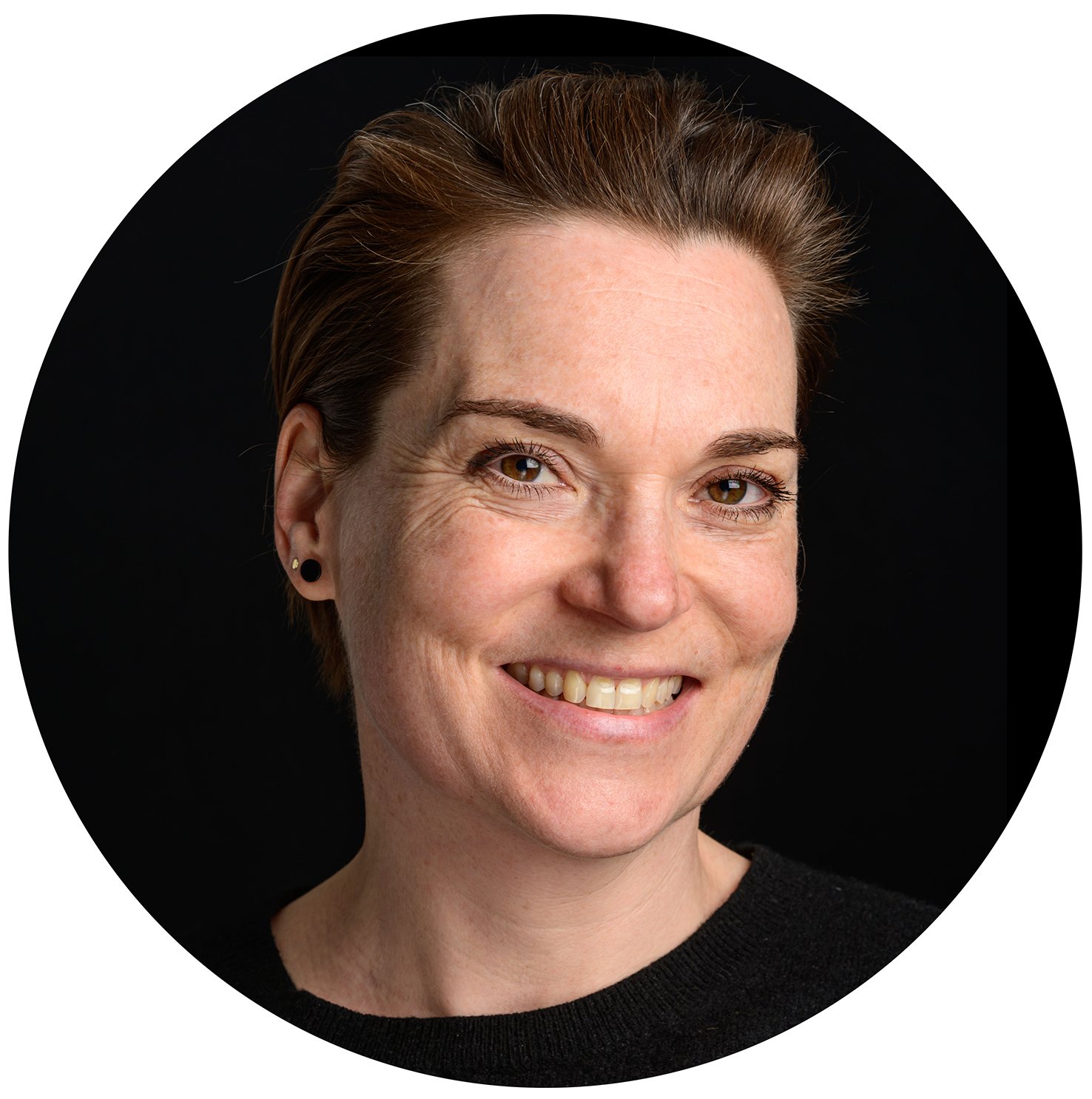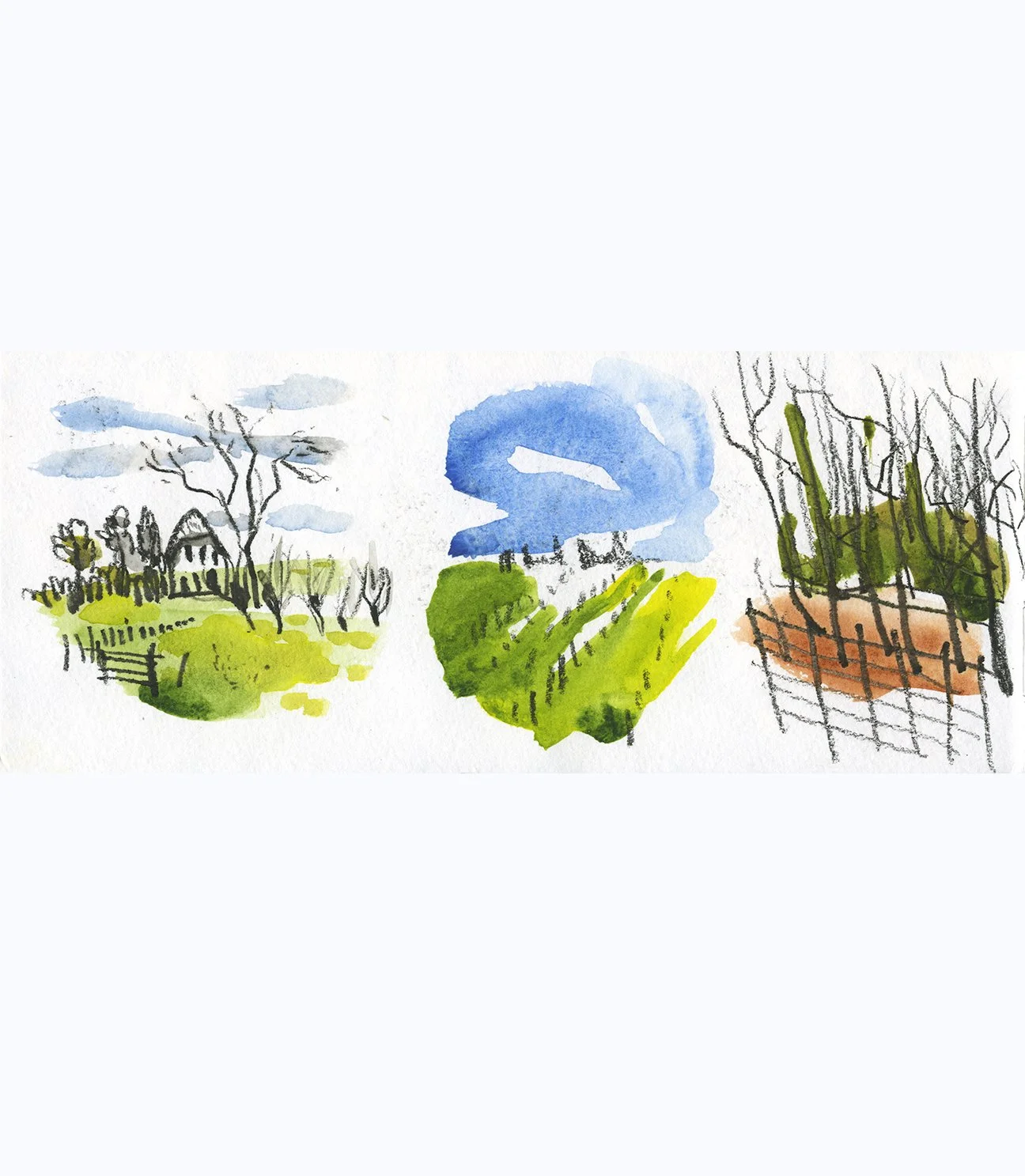Perspective and Foreshortening
Last week, while waiting for my delayed train, I saw a great opportunity to sketch. The announcement said there would be at least a 20-minute wait.
20 minutes are easily filled with some mindless scrolling on your smartphone. But if you always have your sketchbook with you, you have much better entertainment when you unexpectedly need to kill some time.
I pulled out my sketchbook and began drawing the people on the platform. They were also waiting for delayed trains, standing perfectly still; little did they know they were great models for my drawing!
While sketching, I focused on drawing people in perspective, and how the bodies looked in relation to my viewpoint. I started with the lady standing close to me (on the left), then added another figure that I saw next, partly “overlapped” by my foreground model. I added person after person, noticing how everyone’s shoulders were at the same height. Of course there were taller and shorter people, but as a rule of thumb, that is indeed the case when you are standing, and other people are too. If you want to know more about this, I made a video about drawing people in perspective back in 2018.
I had fun balancing my sketchbook on my left arm, and drawing with only pen. Once the train arrived, it was surprisingly not that full, so I had a seat and could put my sketchbook on my lap, and add watercolor and extend the creative fun.
This train station sketch gave me the perfect inspiration for the online Mini-Workshop I lead a couple of days later. I made it all about drawing people, perspective, and foreshortening.
Understanding Perspective and Foreshortening
Perspective in drawing helps create the illusion of depth. It’s what makes your 2-d sketchbook page, feel like it has 3-d space. By placing figures, buildings, or objects in relation to each other, you can visually describe how far away or close things look. For example, when drawing people on a train platform, the figures at the front seem larger and more detailed, while those further back become smaller and less defined.
Foreshortening is more specific for perspective of human or animal figures. Drawing parts of the body that are angled toward or away from the viewer, can be very tricky because you need to draw what you see and not what you think, or what you know..
Think of someone lying on the ground with their feet pointed toward you—the feet appear much larger, while the body is smaller in the distance, and the head even tinier. And when you are also on the floor (worm’s eye view), the distortion will be very different from when you’re standing (bird’s eye view).
It’s a challenging thing to wrap your brain around, but trusting your eyes can bring a lot of life and interest to your drawings.
Practice, Practice, Practice.
If you’re eager to learn how to draw foreshortening, then the only way is to to draw, a lot!
Find subjects to draw, place them in front of each other, maybe change your angle to a worm’s eye view for a dramatic angle. Take photos, or find photos for reference. For this selfie here, I put my phone on the ground while sitting on a bench, and put the camera on timer. The angle is dramatic, and look at how crazy large that foot is, compared to my head!
When drawing these kinds of distortions, you might think “wait, that can’t be right!”
But trust your eyes. Don’t label things (foot, hand, eyes, nose, but look at the shapes that you see. If you want to learn more about not-labeling, check out Betty Edward’s book “Drawing from the right side of the brain”. I learned a lot from that book!
Join My Next Online Drawing Session
If you missed my last live online Mini-Workshop, then make sure to sign up for my next one! I lead these 90-minute drawing sessions monthly, and they’re really fun. I always come up with a theme and simple exercises to break down complex concepts. Whether you’re a beginner or an experienced artist looking to broaden your skills, you’ll get tips, ideas and hands-on practice. Plus, it’s a great opportunity to connect with fellow artists in a supportive community.
So if you’re ready to take your drawing to the next level, sign up and join me in October.










